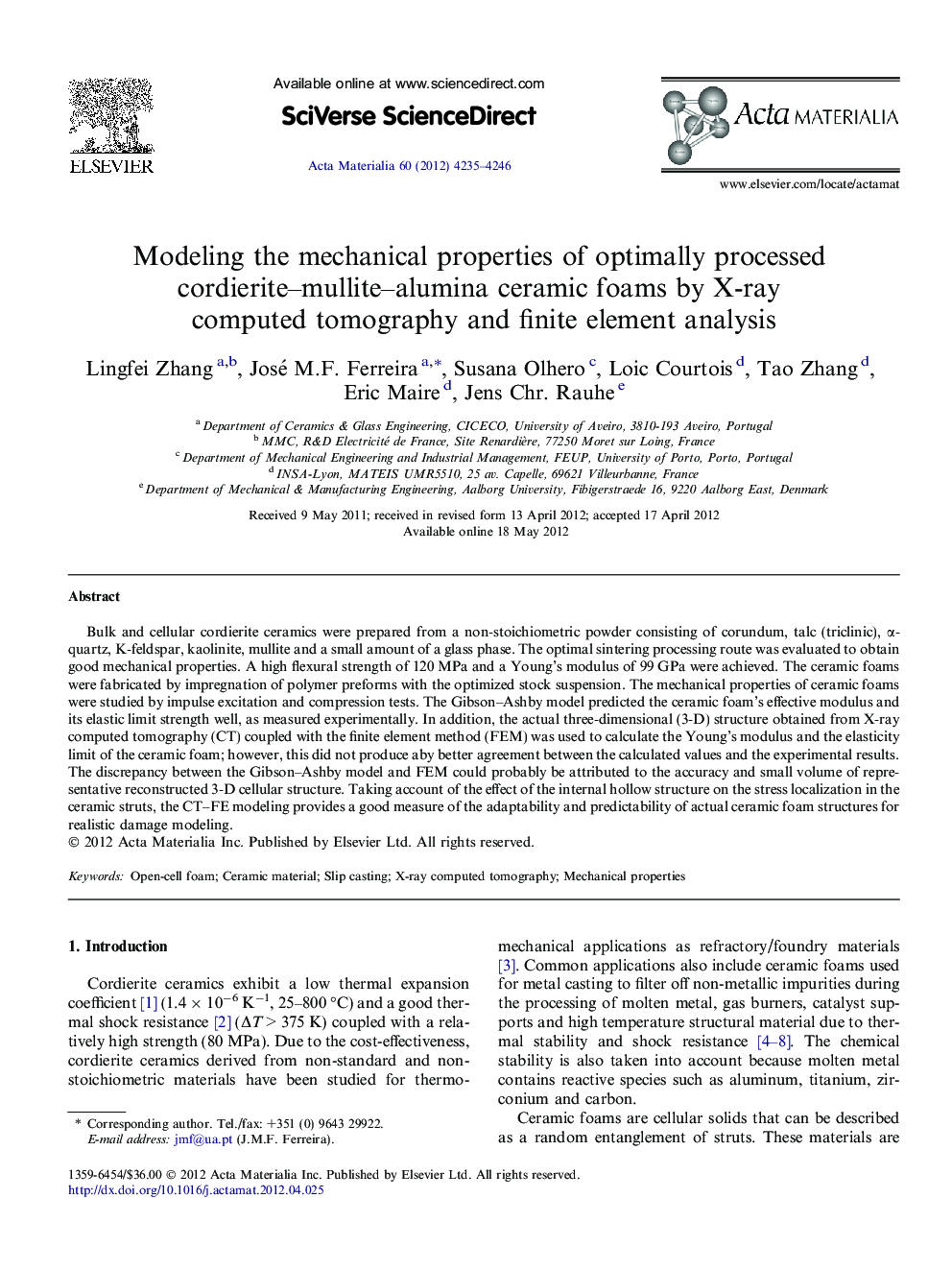| Article ID | Journal | Published Year | Pages | File Type |
|---|---|---|---|---|
| 1446671 | Acta Materialia | 2012 | 12 Pages |
Bulk and cellular cordierite ceramics were prepared from a non-stoichiometric powder consisting of corundum, talc (triclinic), α-quartz, K-feldspar, kaolinite, mullite and a small amount of a glass phase. The optimal sintering processing route was evaluated to obtain good mechanical properties. A high flexural strength of 120 MPa and a Young’s modulus of 99 GPa were achieved. The ceramic foams were fabricated by impregnation of polymer preforms with the optimized stock suspension. The mechanical properties of ceramic foams were studied by impulse excitation and compression tests. The Gibson–Ashby model predicted the ceramic foam’s effective modulus and its elastic limit strength well, as measured experimentally. In addition, the actual three-dimensional (3-D) structure obtained from X-ray computed tomography (CT) coupled with the finite element method (FEM) was used to calculate the Young’s modulus and the elasticity limit of the ceramic foam; however, this did not produce aby better agreement between the calculated values and the experimental results. The discrepancy between the Gibson–Ashby model and FEM could probably be attributed to the accuracy and small volume of representative reconstructed 3-D cellular structure. Taking account of the effect of the internal hollow structure on the stress localization in the ceramic struts, the CT–FE modeling provides a good measure of the adaptability and predictability of actual ceramic foam structures for realistic damage modeling.
